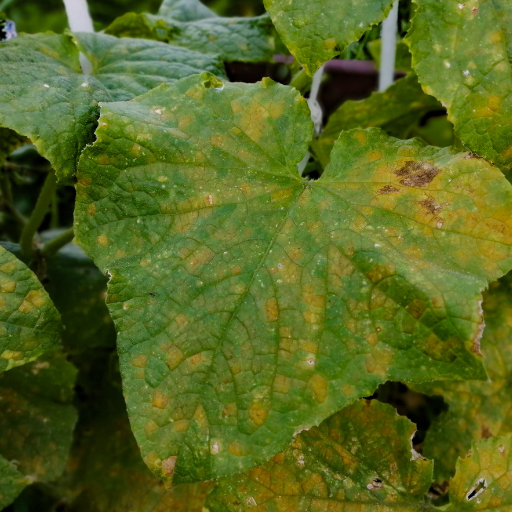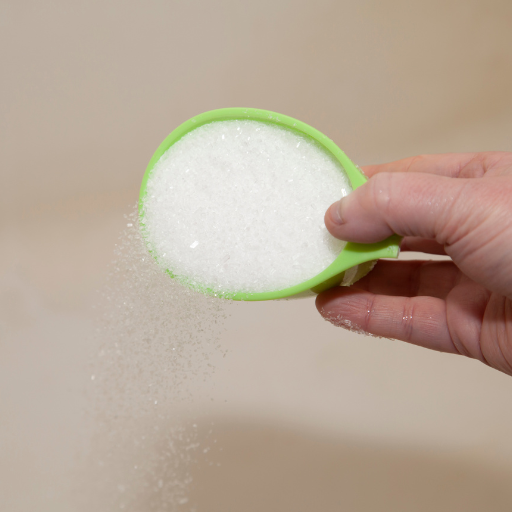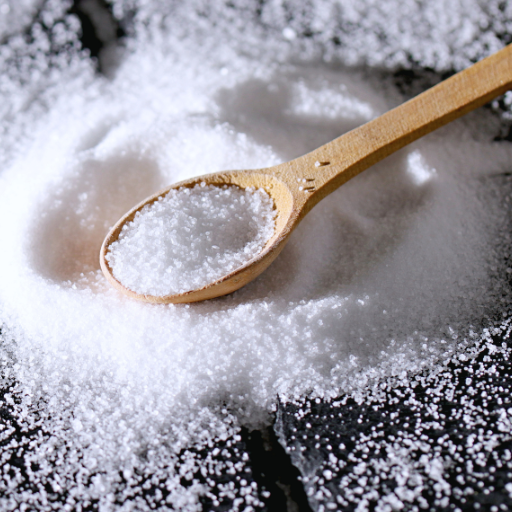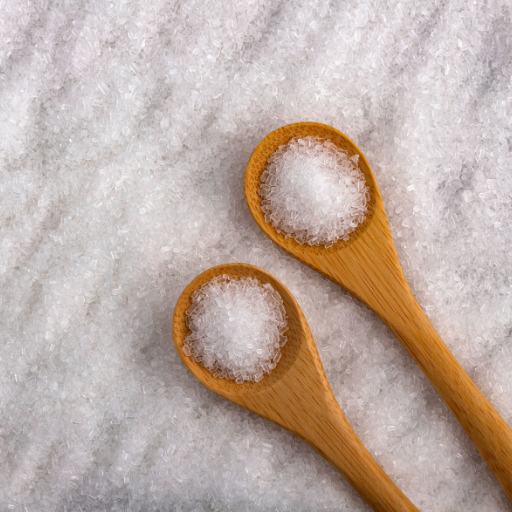Epsom salt, also known as magnesium sulfate in scientific terms, is an important ingredient in horticulture, especially for cultivating cucumbers. In a plant, this mineral compound helps to maintain proper health and productivity by supplying plants with the necessary magnesium and sulfur that are vital to the growth process. Therefore, such advice can assist one in effectively applying Epsom salt to their cucumber plants. Proper application techniques, dosage knowledge, and specific benefits of this substance are some of the aspects which, if understood by gardeners, can improve nutrient uptake, enhance overall yield, and boost plant vigor.
What Are the Benefits of Using Epsom Salt on Cucumber Plants?
Cucumber plants will benefit from Epsom salt in a number of important ways. To begin with, it counteracts magnesium deficiencies that can cause dwarfing and yellowing of the leaves. It is vital for chlorophyll production, which helps the plant to photosynthesise properly and make energy. Also, sulfur contained within Epsom salt assists in enzyme activity and protein synthesis necessary for healthy development of the plant. Continued application of this substance improves nutrient uptake by plants; it also makes the roots strong and healthy thus enhancing overall plant health and yield of cucumbers.
What Makes Epsom Salt Good for Cucumbers?
Epsom salt promotes cucumbers’ good health through several interconnected modes that revolve around its individual elements: magnesium and sulfur. First, magnesium is the central atom in chlorophyll molecules, which are essential for plants to realize photosynthesis. The process aids in converting light into energy quickly, making cells grow faster. In general, magnesium deficiency may be alleviated by foliar spraying or soil drenching 1 tablespoonful of Epsom salt per gallon of water every two weeks.
Sulfur is one component within Epsom salt which enhances enzymatic activities as well as protein synthesis crucial for different physiological processes within the plant system. Besides this, sulfur contributes to amino acid formation required in building blocks like vitamins among others. It’s important to ensure optimal pH levels of about 6-6.8 because both magnesium and sulfur are more readily available in this range where plants can easily absorb them.
Moreover, besides correcting nutritional imbalances, it also results in increased acquisition of such nutrients as nitrogen and phosphorus among others.These factors combined lead it enhanced root systems thereby giving strong structures for the plants hence high yields mostly harvested under such conditions then using epsom salts could be very beneficial.Effectively used, Epsom Salt becomes an integral part of integrated plant nutrition management.
Does Epsom Salt Help with Magnesium Deficiency?
Of course, the magnesium deficiency issue in plants can be tackled by using Epsom salt. Plants need a lot of magnesium which is essential for chlorophyll formation and photosynthesis. Once applied as a foliar spray or soil drench, Epsom salts immediately deliver a source of magnesium to the plant that it can readily take up. It is usually recommended to dissolve one tablespoon of Epsom salt in a gallon of water, applying it every two weeks. These shortcomings are quickly corrected by this method and the condition of the plant is improved resulting in better growth and productivity.
What are Some Indications That My Cucumber Plant is Healthy?
There are several distinctive features and parameters that indicate whether or not the cucumber plant is healthy. First and foremost, vigorous growth and well-established vivid green foliage signify optimum photosynthetic activity, thereby indicating good health status. The leaves should be wide, smooth on both sides with no yellowing or any necrotic spots such indications often signify pest problems or nutrient deficiency.
The stems must be sturdy holding the growing cucumbers upright. Additionally, more flowers show great potential for fruiting because cucumbers require both male and female flowers to be fertilized through pollination.
Some specific parameters include:
- Soil pH: Maintain pH levels at 6.0-6.8 for proper nutrient uptake
- Soil Moisture: Consistently maintain moist soil that reads between 60% – 70% moisture
- Temperature: Optimum temperatures for growth range from 70°F – 85°F (21°C – 29°C).
- Nutrient Levels: Normal soil testing should reveal balanced macronutrient levels particularly nitrogen, phosphorus and potassium along with adequate magnesium and sulfur.
Under these conditions, cucumber plants will grow in ideal health, yielding good crops. Consequently, monitoring these factors becomes very important.
When Should You Use Epsom Salt on Vegetable Plants?

Application of magnesium sulfate in vegetable plants can be supplemented by Epsom salt especially when there is a deficiency of magnesium. The yellowing of leaves between veins is an indication of low levels of magnesium and a decrease in the production of fruits. During planting, it’s advantageous to use Epsom salt by incorporating it with soil or used as a side-dressing during growing season. It is specifically beneficial for crops such as tomatoes, peppers and roses. But extra caution should be taken since excessive amounts can interfere with calcium uptake and overall plant balance because magnesium affects this balance. Performing regular soil testing is recommended to determine the necessity and proper amount of Epsom salt for application.
The Best Time to Apply Epsom Salt on Cucumber Plants
The effectiveness of using Epsom salts on cucumber plants comes out more clearly when it coincides with certain growth stages showing nutrient deficiencies. In the course of early growth, one may add epsomsalts into the soil at planting time so that strong roots are established. In addition, fruit setting will be improved and general plant vigor enhanced if Epsom salts are applied as foliar spray shortly after plants have formed flowers. Furthermore, regular applications may be useful if leaf yellowing occurs between veins due to lack of enough magnesium. One gallon water should have 1-2 tablespoons dissolved in it before being applied every two weeks for better results.
Indications Your Vegetable Garden Needs Magnesium Boost
Visible symptoms including both visual and growth problems indicate that your vegetable garden requires more magnesium. Intervenial chlorosis is most pronounced with chlorosis; while older leaves turn yellow veinal tissue remains green owing to microelement depletion (Kirkby & Mengel, 2019). Chlorophyll molecules present within veinal tissue decay due to reduced mobility since the element is translocated within new cells (Todaka et al., 2016). Poor fruit development also signifies magnesium deficiency where photosynthesis and fruit formation are important mechanisms. The lack of enough magnesium in the plant leads to low fruit yield and size. Also, a general decline in vigor with stunted growth and brittle stems is also an indication that your plants need more magnesium.
Some technical parameters include soil magnesium concentration, which should range from 25 to 50 ppm for optimal vegetable growth (Kirkby & Mengel, 2019). Soil pH levels also affect the availability of magnesium; most vegetable plants require a pH between 6.0 and 6.5 to facilitate adequate uptake of this nutrient (Todaka et al., 2016). It is advisable to carry out soil testing every few years so that you can monitor both these aspects while making sure your garden remains balanced and meets all nutritional requirements of its crops.
How Much Epsom Salt Should You Use for Your Cucumber Plants?

The recommended dosage of Epsom salt for cucumber plants depends varies, but a common rule of thumb is 1 tablespoon to one gallon of water. The solution should be applied after every two weeks in the course of growing. Before applying Epsom salt solution, it is advisable that the plants are watered thoroughly so as to avoid root burn. Another thing you can do is sprinkle a tablespoonful of Epsom salt around each plant’s footings and soak it in water properly, doing this once per month. By using these ways magnesium shall always be supplied at all times which would lead to health growth and better fruit formation.
Calculating the Right Amount of Epsom Salt per Cucumber Plant
Making calculations for determining the right amount of Epsom salts for cucumbers is important because excessive amounts can cause over-fertilization. According to updated recommendations from reputable sources, dissolve 1 tablespoonful of epsome salts in one gallon container filled with water. It should be employed around each cucumber plant’s base area bi-weekly. Alternatively, try incorporating 1 tablespoonful epsome salts in soil around each plant, mix properly with enough water and repeat this activity on monthly basis only. These applications ensure that there is an unceasing delivery of magnesium essential for chlorophyll synthesis and overall well-being of the plant.
Mixing Epsom Salt With Water for Your Cucumber Plants
The first thing you should do when you are mixing Epsom salt with water for your cucumber plants is put 1 tablespoon of it in one gallon of water. You should make sure to dissolve all the Epsom salt by stirring the solution very well. The soil around each plant must be targeted using this mixture, making sure that even distribution is attained. It’s recommended that this practice is done every two weeks during the growing period. Alternatively, at the base, mix about 1 tablespoonful into the soil and water well once per month. Once you follow these instructions, your cucumber plants will have enough magnesium which helps in chlorophyll production as well as their general health.
How to Apply Epsom Salts in the Garden for Cucumbers?

For best results with your cucumber plants, use Epsom salt according to the following steps: You should first dissolve 1 tablespoon of Epsom salts in one gallon of water. During the growing period, you can now distribute this solution equally around each plant’s base at two-week intervals. Alternatively, top-dressing is also effective where one mixes a tablespoon of dry Epsom salt into the soil around each cucumber plant and then thoroughly waters it once a month. This is necessary for uniform and adequate application as it furnishes essential magnesium that facilitates chlorophyll production and overall healthiness of plants. This way, the plants will consistently obtain essential nutrients for optimum development.
Methods of Applying Epsom Salt Directly to Soil
A precise approach towards this practice is very important so as to enhance its utility when directly applied on soil. One effective method involves mixing 1 tablespoon of dry Epsom salt with the soil surrounding the plant base before watering in a process called incorporation. Magnesium is thus distributed evenly during every irrigation cycle. An alternative method involves broadcasting where one spreads the dry Epsom salt uniformly over the ground surface at usually 1-2 tablespoons per square foot and follows this up by deep watering for better penetration into the soil.
If you are using trenching as your gardening technique, dig shallow trenches around your plant and add 1-tablespoonful-Epsom-salt-for-every-1-2-feet-of-trench length before covering up with soil. By doing so, more nutrients are concentrated within reach of roots of plants than would have been achieved by other means. These mechanisms are aimed at ensuring there is constant supply of magnesium while promoting increased chlorophyll synthesis leading to healthier growth in plants themselves.
Cucumber plants and the use of foliar sprays
The leaves of the plant can absorb magnesium quickly by being sprayed directly with Epsom salt using this method. Mix 2 tablespoons of Epsom salt in one gallon of water to make a solution for the foliar spray. It is suggested that the solution should be applied on cucumber plants leaves, ideally early in morning or late in afternoon to prevent burns from mid day sun rays. For best results repeat this application every fortnight throughout the growing season.
The following are some scientific studies and expert recommendations that show how important these guidelines can be when it comes to foliar spraying:
- Concentration: Utilizing 1-2 tablespoons of Epsom salts per gallon of water is an ideal concentration that promotes absorption but does not overload plants.
- Application Timing: Apply early in the morning or late afternoon as evaporation is minimized while absorption efficiency is optimized.
- Frequency: For consistency cucumber plants require a bi-weekly supply of magnesium which is essential for their health and vitality.
These parameters are supported by a number of agricultural extension services and research centres, which underscore foliar application as a technique supporting faster nutrient uptake than soil-based strategies. This method helps to increase chlorophyll production while boosting photosynthesis and general plant health that may result into better yields hence increased fruit quality in cucumber plants.
When should I use Epsom salt on cucumbers?
The best time to use Epsom salt for cucumbers is when plants show signs of magnesium deficiency, which include yellowing of leaves between the veins while the veins remain green. Epsom salt is best applied in the early stages of growth, particularly during the transplantation of seedlings, in order to make strong bases for the plants. Moreover, its regular use during flowering and fruiting stages would guarantee sufficient supply of magnesium need by the plant for robust fruit development. Making a practice of applying it every two weeks either very early in the morning or late afternoon can have cucumber plants staying healthy all through the growing season.
Are There Any Risks of Using Too Much Epsom Salt?

Excessive use of the Epsom salt can cause several problems for cucumber plants. A high amount of magnesium sulfate in the soil leads to an improper balance in the necessary nutrients, especially calcium and potassium. This imbalance in nutrition can result in deficiencies that have a negative impact on plant growth as well as health. Overuse may also lead to salt accumulation within the soil leading to poor intake of water and eventual damage or root rot. Therefore, it is important that growers follow recommended rates and frequencies of application to avoid harming their cucumber plants’ overall wellbeing.
What Happens If You Put Too Much Epsom Salt On Plants?
Over-fertilizing with Epsom salt can negatively affect cucumbers in multiple ways. Primarily, an overabundance of this mineral (magnesium sulfate) called Epsom salt brings about nutrient imbalance, specifically by affecting calcium and potassium availability. Their insufficiency caused by this disparity interferes with growth and general healthiness of plants concerned. Also, excessive amount of magnesium within soil increases salty conditions hence, inhibiting proper absorption of water by roots possibly causing damage on them. Recommended dosages ought to be followed so that good soil conditions are maintained thereby maximizing cucumber plant growth.
Common Signs Your Cucumber Plants Have Too Much Magnesium
Cucumbers having too much magnesium will most likely show various symptoms indicating they are not healthy enough for productivity at maturity stage One common sign is leaf chlorosis where leaves turn yellow while leaf veins remain green due to malfunctioning chlorophyll synthesis. Additionally, poor fruit set/development may occur among cucumbers because; there might be lack of nutrients required during flowering stage.
On top of these two factors, any disorder between magnesium deficiency and availability that inhibit balance between essential minerals such as calcium and potassium is expected to worsen overall nutrient uptake by plants including those for both elements coupled with its own unique consequences on yield parameters expressed as:
- Leaf Chlorosis: The soil magnesium concentration for cucumber plants should be about 0.2-0.4%. Beyond this, the leaves turn yellow.
- Nutrient Imbalance: Calcium below 1000 ppm and potassium less than 2000 ppm can demonstrate the impact of excess magnesium on displacement of these critical nutrients.
- Salt Buildup: Soil Electrical Conductivity (EC) readings above 4 dS/m (decisiemens per meter) can signify problematic salt accumulation, hindering water and nutrient absorption.
Monitoring the soil’s level of nutrients and altering it accordingly will prevent this problem from adversely affecting the productivity of cucumbers during their growing season.
How to Correct Over-Fertilization
- Soil Testing: Start with a thorough soil test to determine the nutrient levels currently present. Use testing kits from agricultural extension services or private laboratories to get precise readings. This will provide the baseline data needed to make corrective measures.
- Technical Parameter: Ideally, soil pH should be between 6.0 and 6.8 for optimum nutrient availability.
- Leaching Excess Salts: Conduct leaching process to decrease the concentration of excess magnesium in it. It involves heavy irrigation which flushes out soluble salts through the soil profile. Make sure that there is adequate drainage so that water logging does not occur which damages plant roots.
- Technical Parameter: Maintain the Soil Electrical Conductivity (EC) below 2 dS/m during leaching to prevent loss of nutrients and ensure proper plant growth.
- Adjust Fertilization Schedule: Based on your soil test results, reevaluate and modify your fertilization schedule accordingly. The focus should be on balanced fertilization which replaces deficient nutrients without over-supplying magnesium. You may consider using fertilizers higher in calcium and potassium.
- Technical Parameters:
- Increase calcium levels above 1,000 ppm as an offsetting agent against excess magnesium.
- Raise potassium levels at least to 2,000 ppm for better plants health conditions.
- Technical Parameters:
- Gypsum Application: If you detect calcium deficiencies, apply gypsum (calcium sulfate) on the soil. Gypsum displaces excess magnesium hence improving soil structure and drainage.
- Technical Parameter: Apply gypsum at a rate of 1,000-2,000 pounds per acre depending upon soil test results and specific crop needs.
- Regular Monitoring: Monitor the health of your soils and plants by carrying out periodic soil tests and plant tissue analysis. Modify fertilization practices appropriately to maintain proper nutrient levels and avoid future over-fertilization problems.
- Technical Parameter: Perform biannual soil tests and monthly tissue tests during growing seasons.
Any grower should follow these steps, together with the technical parameters mentioned, to manage and correct over-fertilization issues and keep cucumber plants healthy and productive.
Preventing and Addressing Common Issues in a Garden

In order to have a good garden, it is very important to manage pests and diseases. Integrated pest management (IPM) is a systematic approach that incorporates biological, cultural, physical and chemical strategies in order to minimize pest damage economically and with minimum risk to the environment. Start with accurate identification of pests and diseases through regular inspections. Use barriers like row covers to keep off insects from plants while introducing helpful insects such as ladybugs or predatory mites helps control pest populations naturally. Additionally, crop rotation and diversity can also effectively break pests’ life cycles.
Proper watering techniques are vital in preventing common problems such as root rot and fungal infections. Watering in the early morning allows foliage to dry during the day which reduces chances of disease occurrence .Using drip or soaker hoses will be able to deliver water directly into the root zone hence minimizing leaf wetness which aids healthier plants.
Moreover, soil health is fundamental for garden success. As such; frequent soil testing enables gardeners amend soils with necessary nutrients and maintain pH levels within optimal ranges for various plant species Incorporating organic matter like compost enhances soil structure by promoting beneficial microbial activity hence leading to nutrient availability thus creating a more resilient garden ecosystem.
Recognition of Early Signs of Magnesium Deficiency
Magnesium deficiency shows up at an early stage through different signs which should be identified quickly before it affects plant health adversely. The symptoms often begin with interveinal chlorosis whereby leaves turn yellow around veins but remain green along these veins themselves. This mainly occurs in older leaves because magnesium is mobile within plants as it translocates towards younger growing tissues. Other symptoms include curled leaves or necrosis particularly at the margins and finally retarded growth due to impaired photosynthesis as well as energy production.
Technically speaking, magnesium is an essential part of chlorophyll that gives it its green coloration while playing a central role in photosynthesis too. Its insufficiency normally corresponds with values of soil pH beneath 5.5 because magnesium becomes less available in highly acidic conditions. For accurate diagnosis, soil tests that indicate levels of magnesium lower than 50 parts per million (ppm) generally imply insufficient levels for most crops. In addition, tissue tests showing leaf magnesium content below 0.2% dry weight further confirm deficiency as well Addressing this calls for a balance fertilization program to ensure an optimum pH range of between 6.0 and 6.5.
To correct a deficit, magnesium sulfate (Epsom salt), dolomitic lime or magnesium oxide can be mixed into the soil while foliar sprays provide immediate relief to affected plants. Therefore, consistent monitoring as well as proper amendments shall enable maintenance of optimal magnesium levels which are key in promoting healthy plant growth and productivity
Does Epsom Salt Control Pests?
Most garden pests are not effectively controlled by Epsom salts. Some anecdotal evidence suggests that it may have a repellent effect on slugs and beetles because of its abrasive texture but there is little scientific data to support its effectiveness as a pest control measure . Instead, most pest management professionals and sources recommend more targeted and evidence-based options such as introducing beneficial insects; using insecticidal soaps or organic pesticides like diatomaceous earth among others . Furthermore, misuse of Epsom salt can lead to imbalances in soils hence possibly harming the health of plants. Consequently, it is better to employ more dependable pest control strategies backed by extensive research for effective gardening practices.
Frequently Asked Questions (FAQs)
Q: How does epsom salt help your cucumbers thrive?
A: Epsom salt is beneficial for cucumber plants because it provides magnesium, which is essential for photosynthesis and overall plant health. By adding epsom salt, you can help your cucumbers grow stronger and produce more fruit.
Q: Can I use epsom salt on other plants in my rusted garden?
A: Yes, epsom salt can be used on other plants, such as tomato plants and peppers, in your rusted garden. It can help improve the overall health and yield of your garden by providing necessary nutrients like magnesium and sulfur.
Q: How do I apply epsom salts to my cucumber plants?
A: To apply epsom salts, dissolve one tablespoon of epsom salt in a gallon of water and use it to water the base of your cucumber plants. You can also sprinkle the salts directly into the soil and water thoroughly.
Q: Are there any risks associated with using epsom salts on cucumber plants?
A: While epsom salts contain essential nutrients, using too much can disrupt the nutrient balance in the soil. It is important to follow recommended guidelines for dosage and application frequency to avoid potential issues.
Q: Where can I buy the products I use and discuss for my rusted garden?
A: You can find the products I use and discuss for my rusted garden by visiting the rusted garden seed and garden shop or checking the rusted garden amazon influencer’s storefront link.
Q: Can I grow cucumbers using vertical tier systems and trellis?
A: Yes, using vertical tier systems and a trellis can be very effective when growing cucumbers. These methods help maximize space, improve air circulation, and make harvesting easier.
Q: What other tips can help my cucumbers thrive?
A: In addition to using epsom salt, ensure your cucumber plants receive adequate water, sunlight, and nutrients. Also, consider providing small live garden mentoring to address any specific issues and proper trellising to support growth.
Q: How often should I apply epsom salts to my garden plants?
A: Generally, epsom salts can be applied once a month. However, the frequency may vary depending on the specific needs of your plants and soil conditions. It’s always best to monitor your plants and adjust accordingly.
Q: Can epsom salt be used as a fertilizer replacement?
A: No, while epsom salt can supplement your plants with magnesium and sulfur, it does not replace a comprehensive fertilizer that provides the full spectrum of nutrients plants need to grow food effectively.






